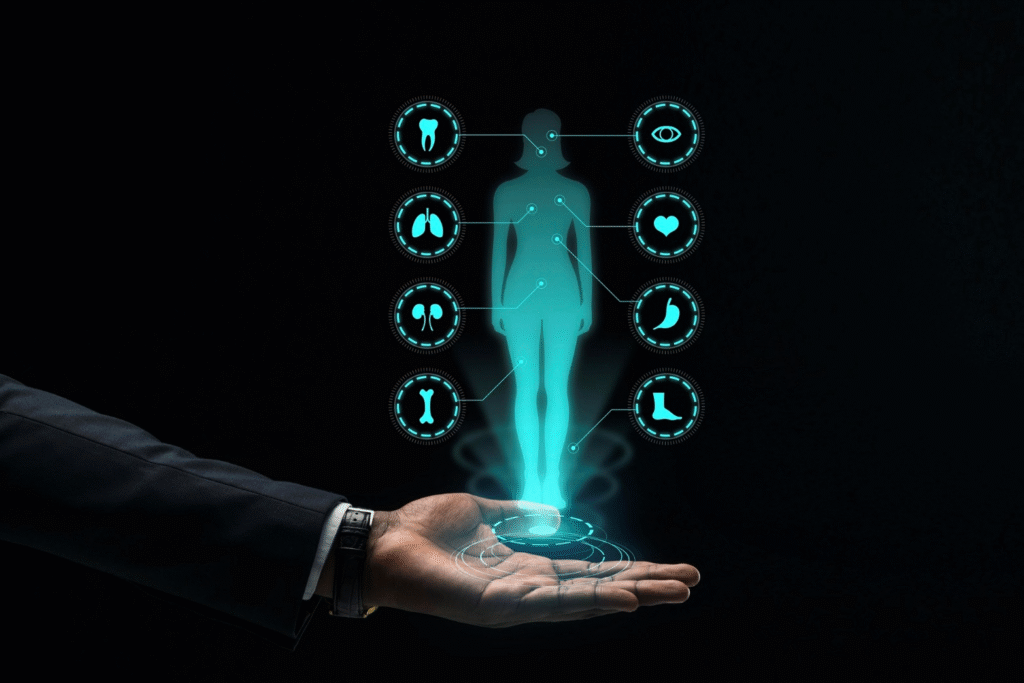
In today’s digital age, the integration of healthcare IT solutions is revolutionizing the way medical services are delivered. These advanced systems not only streamline healthcare operations but also significantly improve patient outcomes. As a result, the global shift towards digitized healthcare infrastructure is gaining momentum, reshaping the landscape of modern medicine. With the consistent evolution of software development and the growing reliance on data-driven decision-making, healthcare professionals now have access to more powerful tools than ever before.
Understanding the Role of Healthcare IT Solutions
To begin with, healthcare IT solutions encompass a wide array of technologies aimed at managing health information efficiently. From electronic health records (EHRs) to telemedicine platforms and mobile health apps, these tools collectively support both clinical and administrative operations. Moreover, they ensure that vital information is available to medical professionals in real-time, allowing faster and more accurate decisions. This seamless exchange of data not only enhances workflow but also elevates the overall quality of care provided to patients.
The Intersection of IT and Healthcare
Over the years, the collaboration between IT and healthcare has grown deeper. As hospitals and clinics strive to keep pace with rising patient demands, the need for integrated IT infrastructure becomes increasingly apparent. Furthermore, the use of digital systems ensures better coordination among healthcare providers. Whether it’s a primary care physician, specialist, or pharmacist, having synchronized access to a patient’s medical history fosters more informed treatment plans.
Additionally, IT and healthcare integration reduce the risk of errors. With digital prescriptions, automated alerts, and advanced imaging software, the chances of misdiagnoses or incorrect medication have significantly decreased. Therefore, healthcare IT systems play a crucial role in supporting safer, more reliable patient care.
Health IT Analytics: Unlocking Data-Driven Insights
Another essential aspect of healthcare IT solution is health IT analytics. By collecting and analyzing vast amounts of data, healthcare providers can identify trends, track patient outcomes, and even predict potential health crises. Consequently, this enables early intervention and better allocation of resources.
For example, predictive analytics can help identify patients at high risk of chronic diseases, allowing for preventive care strategies. Similarly, hospitals can use real-time data to manage bed availability, staff allocation, and equipment maintenance. Ultimately, health IT analytics transforms raw data into actionable intelligence, supporting a more proactive healthcare system.

Key Healthcare IT Trends Shaping the Future
As technology continues to advance, several healthcare IT trends are shaping the future of medical care. One prominent trend is the increasing adoption of artificial intelligence (AI) in diagnostics and treatment planning. AI algorithms can process complex medical data with remarkable speed and accuracy, assisting doctors in making faster, more precise decisions.
Likewise, telehealth services have gained significant traction. Particularly during the COVID-19 pandemic, virtual consultations became a safe and convenient alternative to in-person visits. This trend continues to grow as patients demand more accessible healthcare options. Alongside, wearable devices and mobile apps are empowering individuals to monitor their own health, encouraging a more patient-centric approach.
Cloud computing is also playing a pivotal role in modernizing healthcare IT systems. By storing data in the cloud, institutions benefit from improved scalability, security, and collaboration. Consequently, medical staff can access patient records from any location, facilitating coordinated care even in remote settings.
Healthcare IT Services and Their Impact on Patient Care
Undeniably, the provision of healthcare IT services has led to numerous improvements in patient care. From streamlined admissions and billing to enhanced diagnostic accuracy, these services have transformed the patient journey from start to finish. For instance, integrated platforms enable doctors to access lab results, radiology images, and treatment histories instantly, reducing delays in care.
Moreover, automated reminders and alerts help patients adhere to medication schedules and follow-up appointments, increasing treatment effectiveness. With healthcare IT services, administrative burdens are minimized, allowing staff to focus more on patient interaction and satisfaction.

Innovations in Medical IT: Redefining Healthcare Delivery
Healthcare IT innovations are continually redefining how medical services are delivered. Robotics-assisted surgeries, virtual reality for pain management, and blockchain for secure data sharing are just a few examples. These groundbreaking advancements not only improve efficiency but also enhance the overall patient experience.
In addition, medical IT is facilitating personalized medicine. By analyzing genetic information and lifestyle data, doctors can tailor treatments to individual needs. This targeted approach not only boosts success rates but also minimizes side effects.
Equally important, the integration of Internet of Things (IoT) devices is enabling continuous health monitoring. From heart rate monitors to glucose sensors, real-time data collection supports early detection of anomalies, ensuring timely medical intervention.
Ensuring Ongoing Maintenance of IT Systems
Although the benefits are substantial, maintaining healthcare IT systems requires ongoing attention. Regular software updates, security patches, and performance monitoring are essential to ensure optimal functionality. In this regard, dedicated IT teams must work proactively to prevent downtime and address potential vulnerabilities.
Furthermore, user training plays a critical role in system maintenance. Healthcare professionals must be equipped with the knowledge to use technology effectively and securely. Thus, investing in continuous education and support not only maintains system performance but also promotes a culture of digital fluency within the organization.
Software Development: Building the Backbone of Digital Healthcare
At the core of every successful healthcare IT solution lies expert software development. Custom-built applications tailored to the unique needs of healthcare providers can vastly improve workflow efficiency and patient outcomes. Whether it’s a patient portal, appointment scheduling system, or clinical decision support tool, well-designed software ensures seamless user experiences.
Moreover, agile development methodologies allow for rapid adaptation to changing healthcare requirements. As new regulations and treatment protocols emerge, software updates must be implemented promptly. Therefore, collaboration between healthcare professionals and developers is essential to create tools that are both functional and compliant.
The Future of Healthcare IT Solutions
Looking ahead, the future of healthcare IT solutions is undeniably promising. As technology becomes more intuitive and interconnected, patient care will continue to benefit. With advancements in AI, machine learning, and data security, healthcare organizations are poised to deliver more efficient, personalized, and accessible services.
In addition, the growing emphasis on interoperability will enable different systems and devices to communicate more effectively. This will lead to better-coordinated care across various providers and settings. Patients will have more control over their health data, fostering transparency and trust.
Innovative Healthcare IT Services by DanLogics: Empowering Better Patient Care
At DanLogics, we specialize in innovative healthcare IT services designed to transform how medical organizations operate. By partnering with us, you gain access to advanced technologies that streamline workflows, enhance patient care, and improve overall health outcomes. Our expert team is dedicated to helping healthcare providers stay ahead of industry trends with reliable, scalable, and future-ready IT solutions. Let DanLogics be your trusted partner in delivering smarter, more efficient healthcare.
Conclusion: A Technological Revolution in Patient Care
In conclusion, healthcare IT solutions are at the forefront of a technological revolution in patient care. By integrating IT and healthcare, leveraging health IT analytics, and embracing emerging trends, medical institutions can offer higher-quality services and improved outcomes. Through innovative medical IT tools, robust healthcare IT systems, and dedicated maintenance, the future of healthcare is more connected, intelligent, and patient-focused.
As we move forward, continuous investment in healthcare IT services and software development will be key to staying ahead. Ultimately, these efforts not only enhance operational efficiency but also reaffirm the central mission of healthcare: delivering compassionate, effective, and timely care to every patient.
